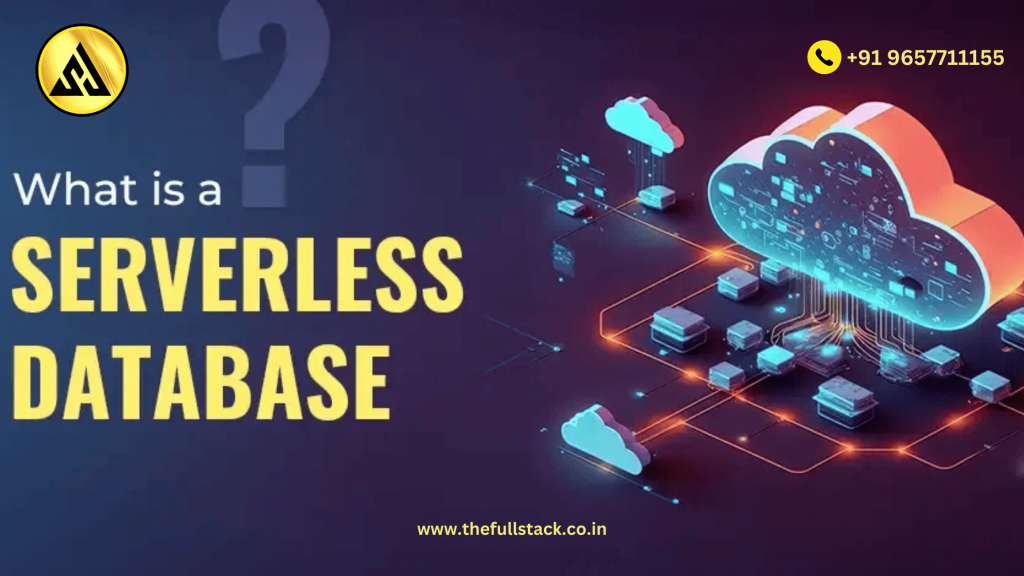Imagine being able to run an application without ever having to worry about maintenance, scaling, or database servers. Doesn’t that sound futuristic? Welcome to the serverless database world, then! This tutorial will explain all you need to know about serverless databases, why they are important, and how you can get started right now, regardless of whether you’re a tech enthusiast, aspiring developer, or business owner wishing to investigate emerging market trends.
What Are Serverless Databases?
Companies and developers are required to maintain servers, guarantee uptime, and deal with scale issues in traditional databases. By letting cloud providers handle everything in the background, serverless databases, on the other hand, remove this inconvenience. Because you only pay for what you use, they are expandable and reasonably priced.
Principal Advantages:
- Traffic surges are automatically handled by auto-scaling.
- Cost-effective: Idle server time doesn’t require payment.
- Simple to Manage: No upkeep or server provisioning is necessary.
Develop more quickly by concentrating on creating applications rather than infrastructure.
Popular Serverless Databases
Let’s explore some of the most popular serverless database solutions in the market:
1. Firebase Realtime Database & Firestore (by Google)
Firebase is a fantastic option if you’re developing mobile or web applications. It provides:
- Live updates and conversation apps benefit greatly from real-time data syncing.
- Even in the absence of an internet connection, offline support guarantees a flawless user experience.
- Simple Integration: Compatible with Google Cloud Functions and other Google services.
2. AWS DynamoDB
Amazon’s fully managed NoSQL database is perfect for businesses that need ultra-low latency and automatic scaling. Key features include:
- On-Demand Pricing: Pay only for the data you use.
- Global Tables: Easily replicate data across multiple regions.
- Seamless Integration: Works well with AWS Lambda, making it great for serverless applications.
3. Azure Cosmos DB
High availability and robust querying are features of Microsoft’s widely dispersed NoSQL database. Advantages consist of:
- Support for Multiple Models: Compatible with Cassandra, MongoDB, SQL, and more.
- Enterprise-Grade Security: Guarantees compliance and data privacy.
- Without the need for manual indexing, automatic indexing speeds up queries.
4. Supabase (Open-Source Alternative)
Supabase is a great Firebase substitute for people who like open-source solutions:
- Complete SQL support is offered by the PostgreSQL backend.
- Live data updates are made possible by real-time capabilities.
- More control over your database is provided by the self-hosting option.
Why Businesses are Moving to Serverless Databases
Market Trends & Adoption
The following factors are driving the move to serverless databases:
- Faster App Development: Businesses and startups need solutions that can reach the market more quickly.
- Cost Savings: By lowering infrastructure expenses, businesses can save thousands of dollars.
- Reliability & Security: Cloud service providers provide high availability, automated backups, and integrated security.
Recent industry statistics indicate that the use of serverless computing is increasing at a rate of more than 20% per year, with large corporationslike Netflix, Airbnb, and Slack leveraging these technologies for better scalability and performance.
Getting Started: Practical Steps
- Select a database: Depending on the requirements of your project, choose the appropriate serverless database.
- Register for a Free Account: To test their products, sign up for Firebase, AWS, or another service.
- Examine the Tutorials & Documentation: The majority of platforms include detailed instructions for new users.
- Create a Small Project: To gain practical experience, begin with a basic CRUD (Create, Read, Update, Delete) application.
- Join Developer Communities: Interact with people on sites such as Discord, Stack Overflow, and GitHub.
Final Thoughts: Take Your First Step Today!
The way developers and organizations manage data is being completely transformed by serverless databases. Now is the ideal moment to investigate serverless solutions, whether your goal is to create a scalable application or save expenses for your company.
You might be like this:

